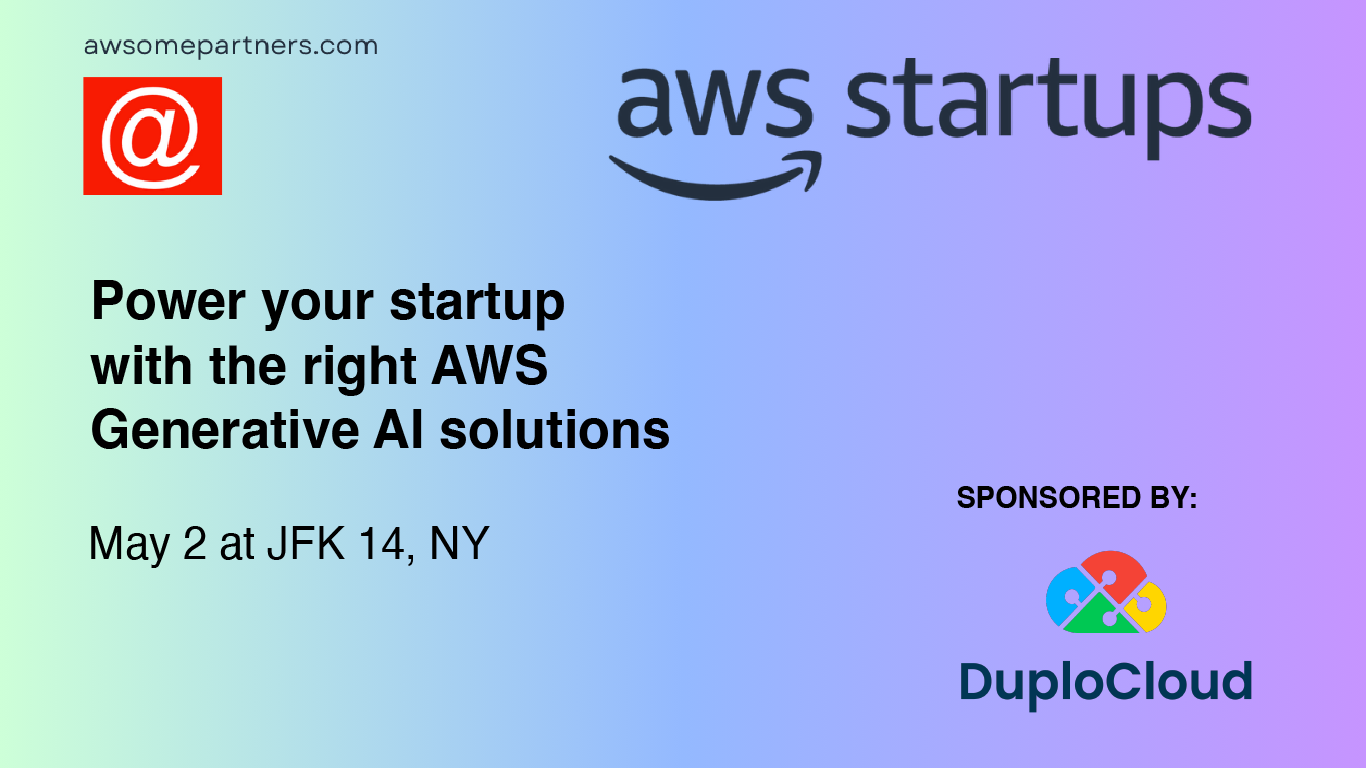Whether you’re building your own model or looking for a readymade solution, Amazon Web Services can help
In the world of cloud services, Amazon Web Services (AWS) is a certified giant. It offers more than 175 featured services, and 86% of companies in the cloud use at least one of them. It should come as no surprise, then, to learn that it’s investing heavily in artificial intelligence (AI) and machine learning (ML). Both are keys to the future of technology, and cloud companies are uniquely positioned to democratize their use.
The suite of AWS AI/ML services includes dozens of tools. Their applications range from computer vision to language AI; from automated code review to online fraud detection. And because they’re run on Amazon’s virtual machines, companies of any size can use them effectively.
These six tools are a great place to start when evaluating how AWS AI and ML services can serve your business.
AWS AI/ML Services for Building Bots
Amazon SageMaker
Building machine learning models has traditionally been the exclusive purview of data scientists and developers. With SageMaker, Amazon aims to allow anyone to build a machine learning model that fits their specific needs.
How? By creating more user-friendly interfaces that retain deep sophistication. The first level of simplification SageMaker offers is to bring notebooks, debuggers, profilers, and other key tools into a single integrated development environment (IDE). That empowers those who are familiar with coding to start building.
To glean practical tips from veteran users for making the most of these high-efficiency tools, read our white paper.

When you build with SageMaker, it can help you prepare your unstructured data for use in ML training. Once your model is trained, you can continue to fine-tune it, experiment with it, and dial in its focus. SageMaker also includes plenty of pre-trained models that you can quickly deploy and customize as you go. That makes it one of the best AWS AI/ML services for organizations that want to spin up ML models as fast as possible.
Solution in Action: AT&T Cybersecurity
AT&T Cybersecurity’s business depends upon its ability to detect potential threats. When it identified machine learning as a way to improve its work, it turned to SageMaker to shape the building process. The resulting model raised the quality of threat alert tickets, slashing the number of false alarms and making action items clearer to engineers. That led to a 50-60% increase in productivity.
Amazon CodeGuru
If you’re looking for more AWS AI services that make building projects of your own easier, CodeGuru needs to be on your radar. This tool works like a veteran engineer peering over your shoulder while you work. Pulling from the millions of lines of Java and Python in the Amazon code base, CodeGuru uses program analysis and machine learning to spot inefficiencies and defects in your code.
CodeGuru isn’t worried about simple syntax errors. Instead, it looks at complex questions, providing you with suggestions on how to streamline your algorithms. That means writing, testing, and deploying higher-quality code in less time. It also means less time spent debugging your code, and improved performance overall.
Even after your code is written, CodeGuru keeps the pressure up by scanning repositories for places to improve. It compiles those opportunities into detailed reports that DevOps teams can use to set priorities for leaner, more focused work.
Solution in Action: Atlassian
Atlassian, the maker of Jira and Trello, is no stranger to DevOps. To streamline its own development, it implemented CodeGuru Profiler. That led engineers to more quickly diagnose the root causes of errors and reduced the need for injecting custom instrumentation code. The result? More efficient work, higher performing code, and tighter application security.
Amazon Bedrock
If you're planning to build and scale your own generative AI app, you'll need to start on a solid base. That's exactly what Amazon Bedrock provides with its foundation models (FMs). Bedrock is a fully managed service that lets you choose an FM from among several leading AI companies. The list includes Meta, Mistral AI, Stability AI, and even Amazon itself. You can then customize your FM to your particular use case with your own data.
Because Bedrock only provides the starting point, where you take it is up to you. You can use your FM to create virtual assistants that can understand and respond to user requests, write summaries of large bodies of text, generate images, or answer questions based on huge volumes of text and images.
Solution in Action: Toyota Connect
More than 10,000 companies use Amazon Bedrock, including leading automotive manufacturer Toyota. The company's data services division, Toyota Connected, turned to Bedrock to improve its user experience. Rather than force car owners to dig through a paper manual, Toyota used a Bedrock FM to build a generative AI-powered assistant. That lets users more quickly find the solution they need, whether it's an explanation for a dashboard icon or learning how to engage the traction control system.
AWS AI/ML Services for Implementing Bots
Amazon Personalize
Personalization is more than a buzzword. Research shows that not only do today’s customers expect it, but they get frustrated when companies fail to provide it. On the flip side, companies that lean into personalization can drive significant revenue gains — up to 40% in some cases. Nobody knows this better than Amazon, where, for more than a decade, customers have enjoyed personalized product recommendations based on their past purchases.
Amazon Personalize is one of the AWS ML services powering those recommendations. With Personalize, you can collect customer data, feed it to a machine learning algorithm, and train a model that gives those customers more of what they want. Purchase history can lead to upsells and cross-sells.
But Personalize can also be used to create customer segments based on those purchases. This makes it easy to identify distinct swathes of customers that share purchase habits, and to more accurately target them with marketing materials.
Over time, you can continue to refine your Personalize algorithm (or algorithms) using business goals and other criteria. For example, if you’ve overstocked an item, you can give it a little more weight in the algorithm. Personalize will then suggest it more often — so long as it’s still relevant for the customer in question.
Solution in Action: Lotte Mart
Lotte Mart, the popular South Korean hypermarket, had been using its own data analysis to create personalized coupons for customers. These worked well, but Lotte Mart wanted a way to accelerate the coupon generation process and increase their redemption rates. With Amazon Personalize, they did just that. Coupon usage more than doubled with Personalize, significantly improving monthly sales.
Amazon Rekognition
Humans excel at many things. Processing massive amounts of audio and video quickly is not one of them. Amazon Rekognition is the AWS AI/ML service that can help. This tool can comb through terabytes of unstructured data and detect faces, objects, and other patterns. It also uses scalable deep learning technology so that it can improve over time.
Rekognition is great at identifying faces and features in unstructured data. If you feed it photos or videos of a person, it can match them to one another, sort them, and apply tags that make them easy to find later. It can also use facial comparison and analysis to automatically verify someone’s identity and reject bad actors trying to use spoofs.
But Rekognition isn’t just about faces. It can also spot patterns, objects, and more. Photos of bikes, mountains, the outdoors, and anything else can be similarly tagged and sorted. One common use case for this tech: content moderation at scale. Rekognition can spot inappropriate content and take it down with minimal human input.
Solution in Action: NFL
Over the course of a single football game, the NFL generates enormous quantities of video and photo media. All of that can be used to create promotional materials from trailers to ad spots — but first, it has to be processed.
That’s an incredibly tedious process for humans, so the NFL turned to Amazon Rekognition to generate metadata tags for all its content. These tags are sometimes general (such as when the file was created) and sometimes specific to the NFL’s use cases (such as the names of players in a shot). Once tags are in place, that huge database of unstructured content becomes instantly searchable. That raises the bar for the speed and quality of production.
Amazon Lex
Customers today want instant access to support services, and they want it on their own schedules. Luckily, AWS AI services include Lex, a tool for building, testing, and deploying automated support services. Chatbots using natural language processing are the most common form of automated support, but Lex also supports interactive voice response and voice assistants.
High-quality customer service is expensive, and it doesn’t make sense to use it for common or simple questions. With Lex, your business can empower customers to solve their issues in the manner they’re most comfortable with — whether that’s text chat or a voice call. Much of the time, a human service agent isn’t even required.
If a customer can’t reach a solution through the bot, Lex can route them to the appropriate service agent. All the data it collects when interacting with the customer positions it to minimize wait times, cut down on transfers, and raise first call resolution (FSR) rates by getting that customer the right agent as soon as possible.
Lex can also be used for internal systems, providing employees with the answers to frequently asked tech or benefit-related questions.
Solution in Action: Vanguard
The investment company Vanguard services more than 30 million customers worldwide. As you can imagine, that leads to a huge volume of support calls. More than 200 come in every minute, totaling more than 40,000 each day.
In an effort to streamline operations, Vanguard incorporated Lex. Starting with an end-to-end vertical slice of the bot, Vanguard slowly rolled Lex out to all its customers. The program went exactly as intended: The number of transfers decreased, wait times tumbled, and FSR rates went up.
Push AI/ML Further with DuploCloud
AI and machine learning show enormous potential for accelerating work of all kinds. To get that same speed boost in cloud infrastructure provisioning, consider DuploCloud. Our platform's no-code/low-code interface makes it easy to standardize and automate your infrastructure whether you’re using AI/ML or not. We keep that infrastructure easy to manage as you scale. Plus, our real-time monitoring uses AI to maintain system performance and security.
Learn more about how DuploCloud can benefit your business and schedule a demo today.









